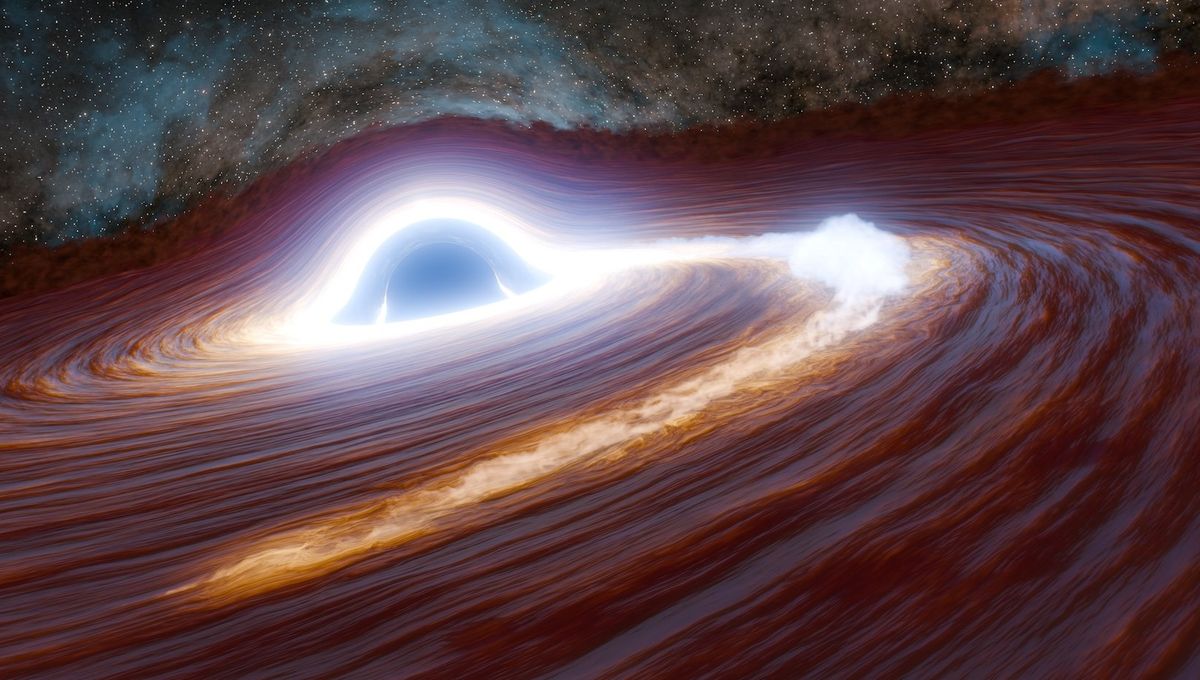
Nobody does it better than supermassive black hole J2245+3743. It is a bright, active galactic nucleus (AGN), with a mass 500 million times that of our Sun, and it just caused a flare like no other supermassive black hole has done to date.
The rest of this article is behind a paywall. Please sign in or subscribe to access the full content.
The event was spotted by the Zwicky Transient Facility (ZTF), based at Caltech’s Palomar Observatory, in 2018. The flare brightened by a factor of 40 over the course of a few months. At its peak, it was about as bright as 10 trillion Suns. That’s 30 times brighter than the next brightest flare. For an object 10 billion light-years away, its incredible light is coming loud and clear.
“The energetics show this object is very far away and very bright,” lead author Matthew Graham, research professor of astronomy at Caltech, as well as the project scientist for ZTF, and a co-principal investigator of the project, said in a statement. “This is unlike any AGN we’ve ever seen.”
When it was first discovered, the object did not look to be anything special, but the flare did not seem like it was dying down, so they conducted follow-up observations of the object with the W. M. Keck Observatory in Hawai‘i. That data showed it to be so incredibly bright that the team had to use NASA’s former Wide-field Infrared Survey Explorer (WISE) to double-check it was actually this bright.
“At first, it was important to establish that this extreme object was truly this bright,” explained co-author K. E. Saavik Ford, a professor at the City University of New York (CUNY).
“If you convert our entire Sun to energy, using Albert Einstein’s famous formula E = mc2, that’s how much energy has been pouring out from this flare since we began observing it,” Ford added.
The leading explanation for this event sees the supermassive black hole ripping apart a star. This is a process known as a tidal disruption event or TDE. If indeed this was a TDE, then the black hole ripped apart and began feeding on a star with a mass of at least 30 times our Sun. This would be bigger than the biggest known, an event nicknamed Scary Barbie after its initial ZTF classification as ZTF20abrbeie.
“Stars this massive are rare,” Ford said, “but we think stars within the disk of an AGN can grow larger. The matter from the disk is dumped onto stars, causing them to grow in mass.”
The work of ZTF, funded by the US National Science Foundation, is crucial to discovering these transient events. The NSF and Department of Energy’s Vera C. Rubin Observatory may also soon discover new and extreme TDEs as it starts its decade-long observation of the sky.
“We never would have found this rare event in the first place if it weren’t for ZTF,” Graham explained. “We’ve been observing the sky with ZTF for seven years now, so when we see anything flare or change, we can see what it has done in the past and how it will evolve.”
The study was published in the journal Nature Astronomy.
Source Link: Record-Breaking Brightest Black Hole Flare Shines With The Light Of 10 Trillion Suns